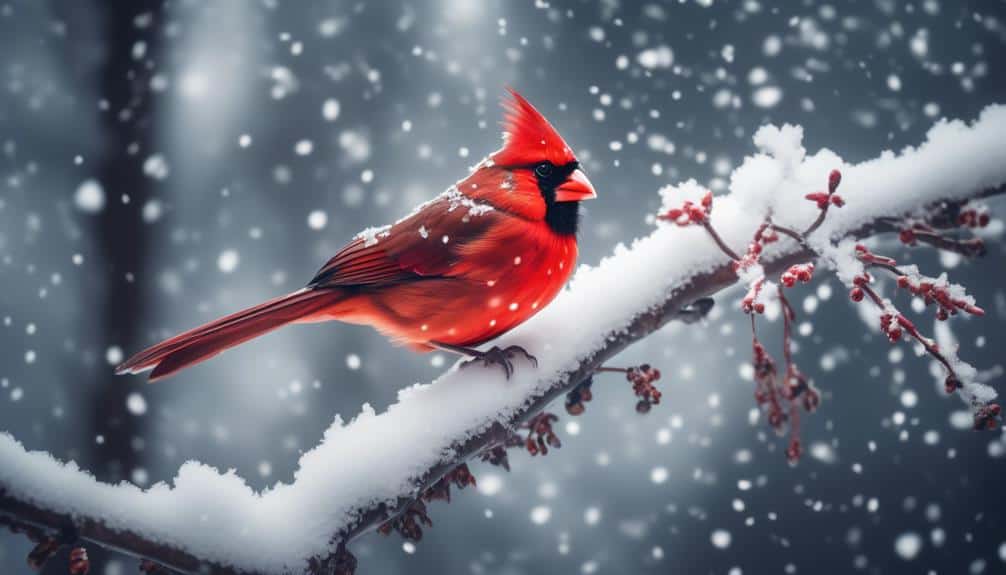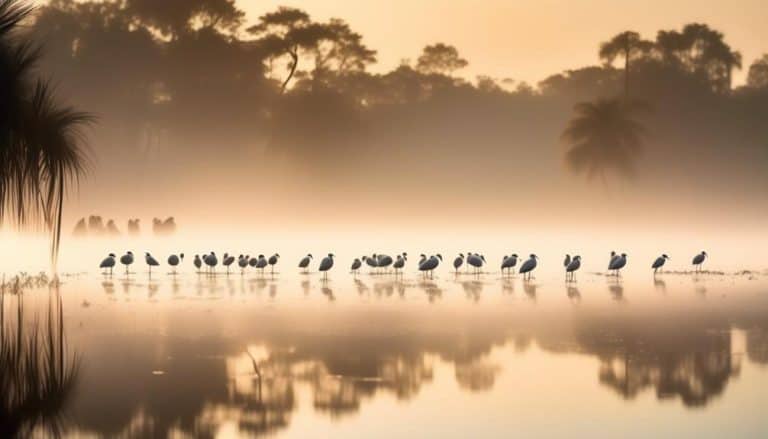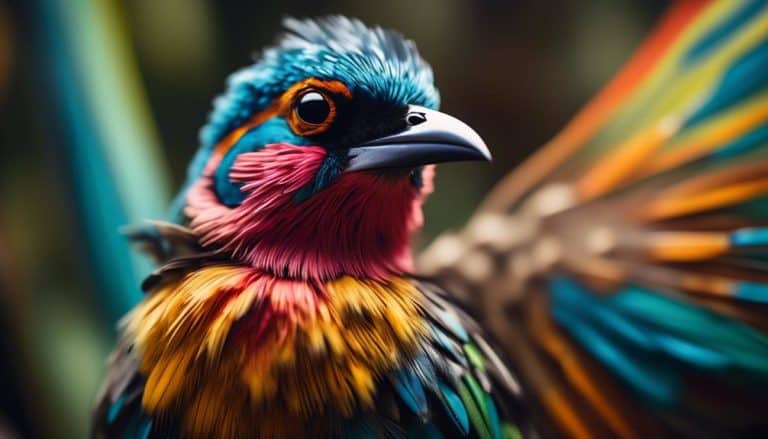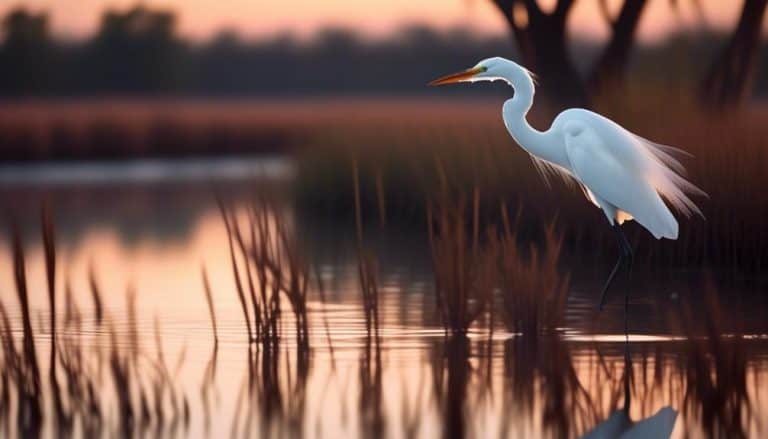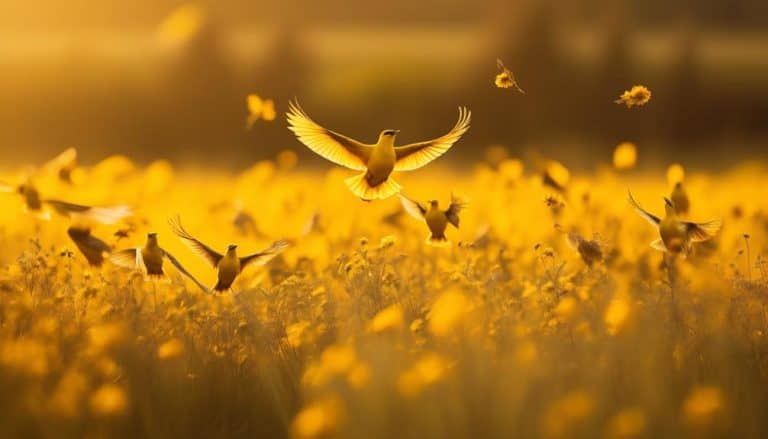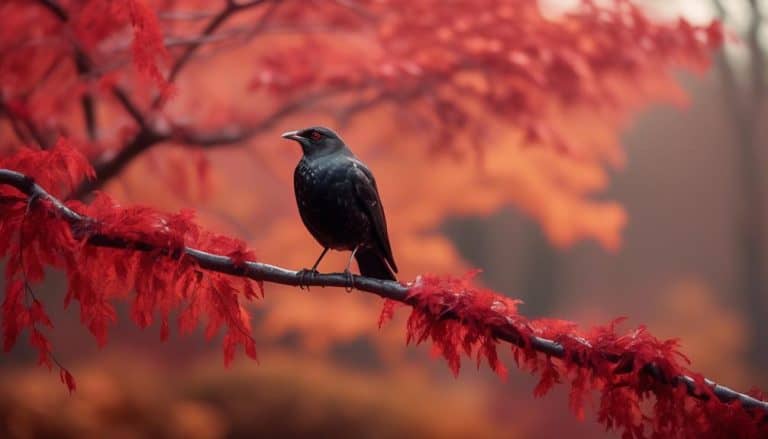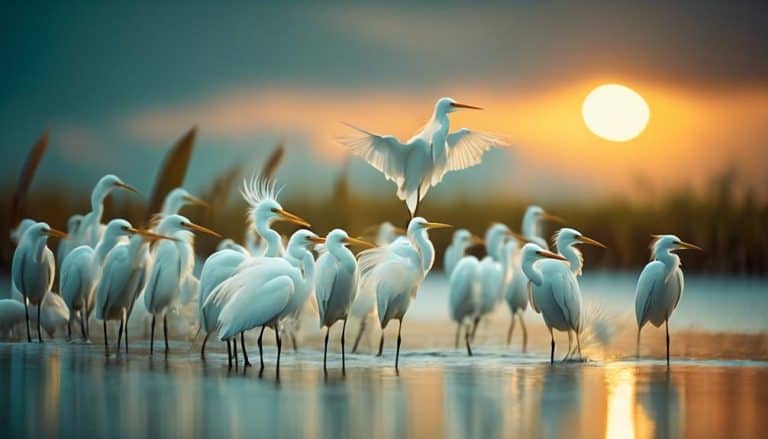As I step outside into the crisp, wintry air of Pennsylvania, I can't help but marvel at the sight of these magnificent avian creatures gracing our skies. The winter months bring forth a diverse array of feathered visitors, each one unique in its own way.
From the regal Bald Eagle to the elusive Snowy Owl, our state becomes a haven for these fascinating beings. But it's not just the rare and exotic species that capture my attention; there are also the common yet charming birds like the Dark-Eyed Junco and the vibrant Northern Cardinal.
Let's not forget the American Goldfinch, donning its bright winter plumage, or the ever-energetic Black-Capped Chickadee, a year-round companion. Join me as we embark on a journey through the winter wonderland of Pennsylvania, where these birds paint our landscapes with beauty, mystery, and a touch of serendipity.
Bald Eagle: Majestic Winter Residents
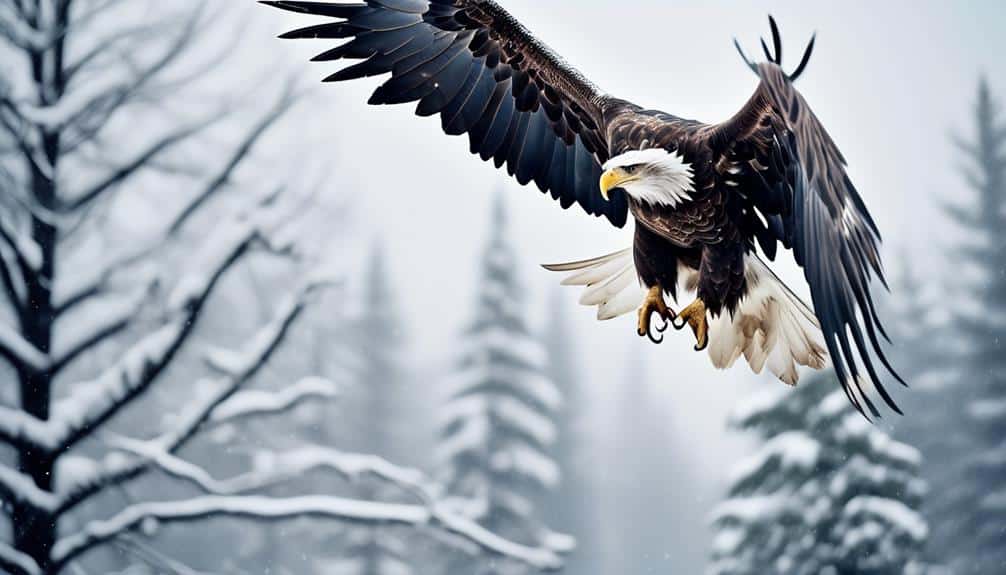
Bald Eagles, with their majestic presence and impressive wingspans, are a prominent winter resident in Pennsylvania. As an avid bird watcher, I've had the privilege of witnessing these majestic eagle sightings firsthand. The winter season brings an influx of bald eagles to Pennsylvania, as they migrate southwards in search of food and favorable habitats. These magnificent birds can be seen soaring through the sky, their white heads and tails contrasting against the winter landscape.
Winter bird conservation efforts play a crucial role in ensuring the survival of bald eagles in Pennsylvania. With their populations once on the brink of extinction due to habitat loss and pesticide use, these conservation efforts have proven to be vital in their recovery. By protecting and preserving their habitats, such as wetlands and rivers, and implementing strict regulations on hunting and fishing practices, we can provide a safe haven for these winter residents.
With their strong conservation measures in place, Pennsylvania has become a sanctuary for bald eagles during the winter months. Their majestic presence not only captivates bird enthusiasts like myself but also serves as a symbol of successful wildlife conservation. It's a true testament to the power of dedicated efforts in preserving our natural world.
Snowy Owl: the Arctic Visitor
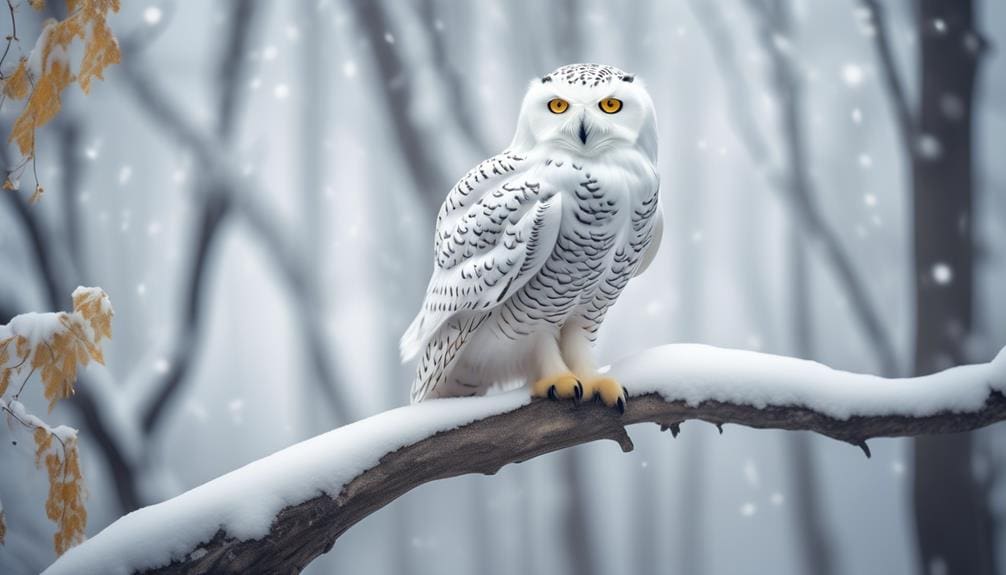
As I continue my exploration of winter birds in Pennsylvania, my attention turns to the remarkable visitor from the Arctic: the Snowy Owl. These magnificent birds are known for their stunning white plumage, piercing yellow eyes, and impressive size. Snowy Owls are known to migrate south from their breeding grounds in the Arctic during the winter months, seeking food and shelter in different regions.
Here are three fascinating facts about the Snowy Owl's migration patterns:
- Long-Distance Travelers: Snowy Owls undertake long-distance migrations, covering thousands of miles each year. They've been known to travel as far south as Pennsylvania and even beyond. This migratory behavior allows them to find suitable hunting grounds and adapt to changing weather conditions.
- Arctic Wildlife Conservation: The migration patterns of Snowy Owls highlight the importance of Arctic wildlife conservation. As these birds rely on healthy Arctic ecosystems for breeding and raising their young, their presence in different regions serves as a reminder of the interconnectedness of habitats and the need to protect fragile Arctic environments.
- Variable Migration Patterns: While some Snowy Owls migrate consistently each year, others undertake irregular migrations known as irruptions. These irruptions occur when the population of lemmings, their primary prey, declines in the Arctic. As a result, Snowy Owls venture further south in search of food, leading to their unexpected presence in places like Pennsylvania.
Understanding the migration patterns of Snowy Owls is crucial for their conservation and helps researchers track their populations. By studying their movements, scientists can gain insights into the health of Arctic ecosystems and implement measures to protect these magnificent birds and their habitats.
Dark-Eyed Junco: the Common Winter Sparrow
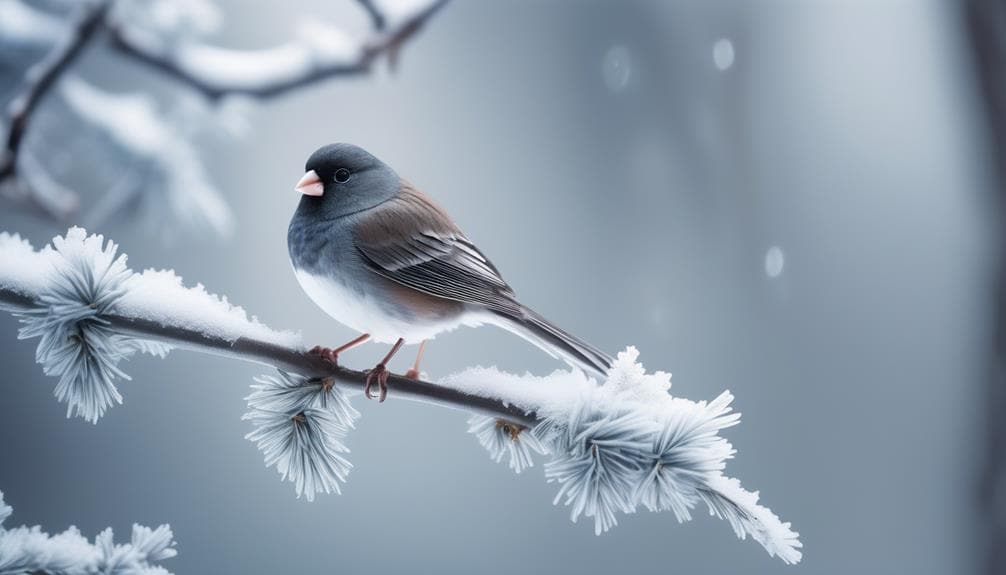
The Dark-Eyed Junco, a common winter sparrow, is a fascinating bird species that can be found in Pennsylvania during the colder months. These small, migratory birds are part of the genus Junco and are known for their distinct appearance and behavior. Dark-Eyed Juncos are often referred to as 'snowbirds' due to their preference for colder climates during winter.
As one of the most common winter sparrows, Dark-Eyed Juncos can be easily identified by their dark gray or black hooded heads, contrasting with their pale gray or white underparts. They also have white outer tail feathers that flash when they fly, providing a striking visual display. These birds are typically ground-dwellers and can often be seen hopping and foraging on the forest floor in search of seeds and insects.
During the winter months, Dark-Eyed Juncos form large flocks, which can consist of both resident and migratory individuals. They're highly social birds and often associate with other winter bird species, such as American Tree Sparrows and White-throated Sparrows. This behavior not only provides them with protection from predators but also increases their chances of finding food.
Dark-Eyed Juncos are well-adapted to the harsh winter conditions in Pennsylvania. Their plumage provides insulation, and they've a unique behavior called 'sunbathing' where they fluff up their feathers to trap warm air close to their bodies. This helps them conserve energy and stay warm during the colder months.
Northern Cardinal: a Splash of Color in the Snow
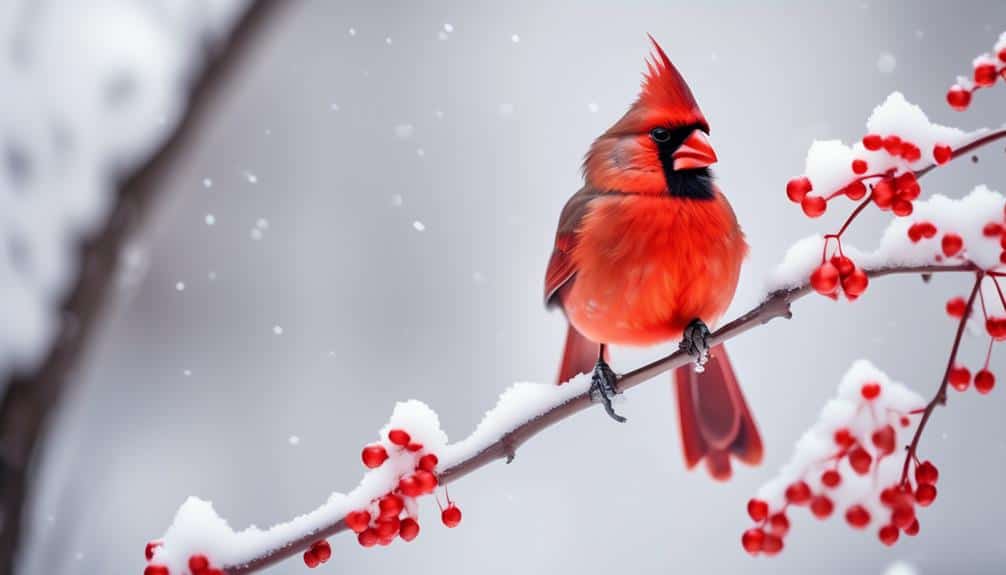
Dark-Eyed Juncos may dominate the winter landscape in Pennsylvania, but amidst the sea of gray and white, the vibrant plumage of the Northern Cardinal stands out as a striking splash of color. As I observe these beautiful birds, I'm struck by their distinct appearance and fascinating behavior.
Here are some interesting facts about Northern Cardinals:
- Cardinals in other seasons:
- While their striking red feathers are most prominent in winter, male Northern Cardinals actually maintain their bright plumage throughout the year. In contrast, the females exhibit a more subtle combination of brown and red feathers.
- During spring and summer, these birds' melodious songs fill the air as they establish their territories and attract mates. Their distinctive calls are a welcome sign of the changing seasons.
- In warmer months, cardinals can often be found nesting in shrubs, trees, and dense vegetation. Their nests are carefully constructed by the female using twigs, grasses, and leaves, providing a safe haven for their eggs and young.
- Cardinal symbolism in folklore:
- The Northern Cardinal holds a special place in folklore and cultural symbolism. Its brilliant red plumage is often associated with vitality, passion, and strength.
- In some traditions, the sighting of a cardinal is believed to bring good luck or even a message from a departed loved one.
- The bird's resilience in enduring harsh winter conditions has also led to its symbolism of hope and perseverance.
As the snow blankets the Pennsylvania landscape, the Northern Cardinal's vibrant presence is a testament to the beauty and resilience of nature.
American Goldfinch: the Bright Winter Plumage
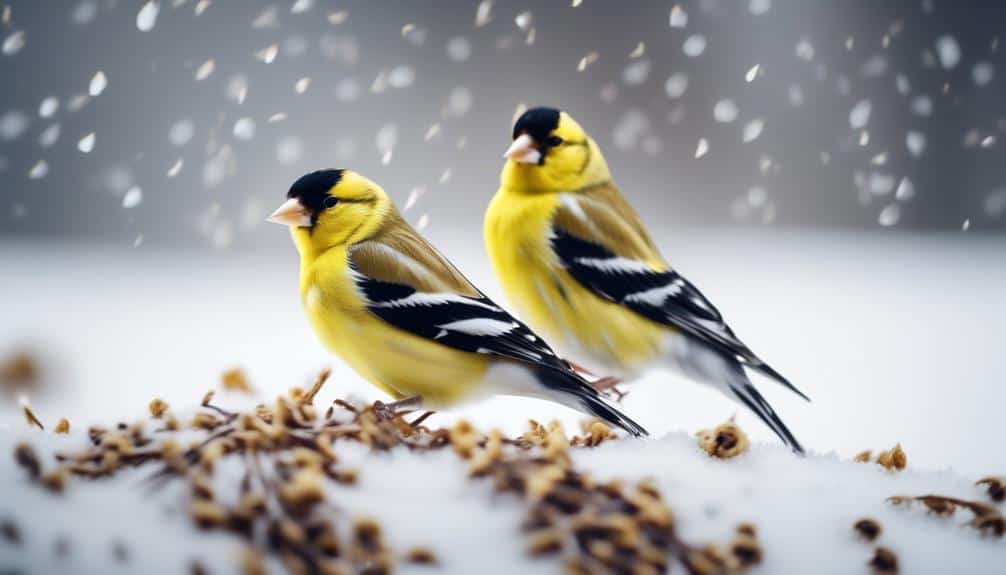
With its striking yellow plumage contrasting against the winter landscape, the American Goldfinch brings a vibrant burst of color to Pennsylvania. This small songbird, scientifically known as Spinus tristis, undergoes a remarkable transformation during the winter months. In the summer, the American Goldfinch displays a bright yellow body and black wings, but as the cold weather approaches, it molts into a more subtle plumage. The male goldfinch loses its vibrant yellow feathers and dons a muted olive-brown coat, while the female retains a similar color palette. This change in plumage allows the American Goldfinch to blend in with the barren trees and shrubs of the winter landscape.
Winter bird migration is an intriguing phenomenon, and observing the American Goldfinch during this time can be a rewarding experience for birdwatchers. These birds are known for their late breeding habits, waiting until the summer months when food sources are abundant. Consequently, they're one of the last species to migrate southward in the fall and one of the first to return in the spring.
To spot an American Goldfinch during the winter, look for them in open fields, gardens, or areas with abundant seed-bearing plants. Their diet consists mainly of seeds, particularly those from thistles, sunflowers, and dandelions. Providing bird feeders with nyjer and sunflower seeds can attract these colorful finches to your backyard.
Black-Capped Chickadee: the Energetic Year-Round Companion
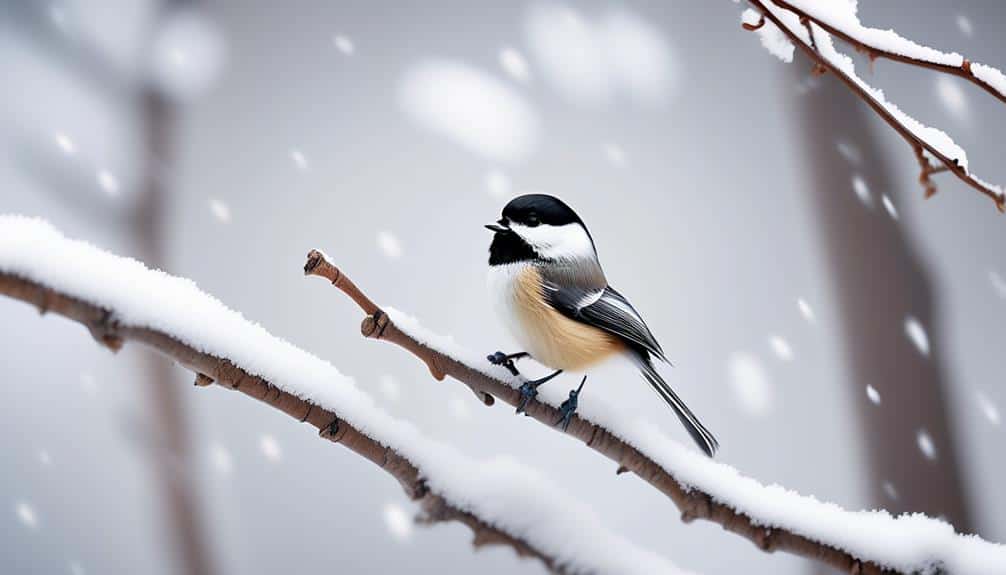
A consistent and dynamic presence in Pennsylvania's woodlands and backyard habitats, the Black-Capped Chickadee performs its energetic antics and endearing calls throughout the entire year. With their striking black caps, white cheeks, and grayish bodies, these small songbirds are a joy to observe. They exhibit a wide range of behaviors that contribute to their year-round companionship, making them a favorite among bird enthusiasts.
Energetic behavior:
- The Black-Capped Chickadee is known for its lively and active nature. It's constantly on the move, flitting between branches, foraging for insects, seeds, and berries.
- These birds are highly acrobatic, often hanging upside down to reach food hidden beneath leaves or bark. Their agility and energy are a sight to behold.
- They engage in playful behavior, such as hanging from seedheads and swinging back and forth. This energy and enthusiasm make them a delightful presence in any environment.
Year-round companionship:
- Black-Capped Chickadees don't migrate and can be found in Pennsylvania throughout the year. Their constant presence brings a sense of familiarity and comfort.
- They form strong social bonds and are often seen in small flocks. These flocks stay together even during the winter months, providing companionship and protection.
- The Black-Capped Chickadee's distinctive calls, including their signature 'chick-a-dee-dee-dee' song, can be heard year-round. Their vocalizations create a sense of connection and add to their charm.
Frequently Asked Questions
How Long Do Bald Eagles Stay in Pennsylvania During the Winter Months?
During the winter months, bald eagles stay in Pennsylvania for an average lifespan of around 20 years. The population of bald eagles in Pennsylvania has been steadily increasing, making it a prime location for observing these majestic birds.
What Is the Average Lifespan of a Snowy Owl and How Many Are Typically Spotted in Pennsylvania Each Winter?
The snowy owl, with an average lifespan of 10 years, can be a majestic sight in Pennsylvania during winter. Typically, a small number of these beautiful birds are spotted, adding a touch of wonder to the snowy landscapes.
Are Dark-Eyed Juncos Migratory Birds or Do They Stay in Pennsylvania Year-Round?
Dark-eyed juncos are migratory birds that visit Pennsylvania during the winter. They are a common winter bird species in Pennsylvania, known for their distinctive plumage and ground-feeding habits.
Do Northern Cardinals Change Their Diet During the Winter Months?
During the winter months, do northern cardinals change their diet? Well, let me tell you, these vibrant birds sure know how to adapt! They may stick around Pennsylvania year-round, but their menu definitely gets a winter makeover.
How Do American Goldfinches and Black-Capped Chickadees Survive the Harsh Winter Conditions in Pennsylvania?
American goldfinches and black-capped chickadees survive harsh winter conditions through various strategies. They have adapted to tolerate cold temperatures, grow extra feathers for insulation, and find food sources such as seeds and insects. Winter birdwatching in Pennsylvania offers opportunities to observe these survival techniques.
Conclusion
As the winter chill settles over Pennsylvania, the skies come alive with the majestic presence of the Bald Eagle. Its powerful wings spread wide, soaring through the icy air, reminding us of the beauty and resilience of nature.
The Snowy Owl, a visitor from the Arctic, enchants us with its ethereal presence, a symbol of the untamed wilderness.
The Dark-Eyed Junco, the common winter sparrow, flits among the snow-covered branches, a delicate reminder of the changing seasons.
And amidst it all, the Northern Cardinal and American Goldfinch bring vibrant splashes of color to the white landscape.
Finally, the Black-Capped Chickadee, with its energetic chirps, serves as a constant companion throughout the year, a reminder of the enduring spirit of nature.

